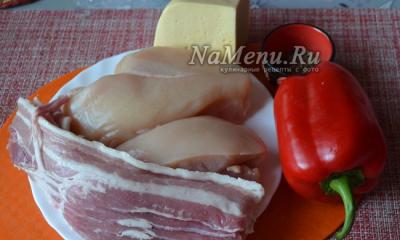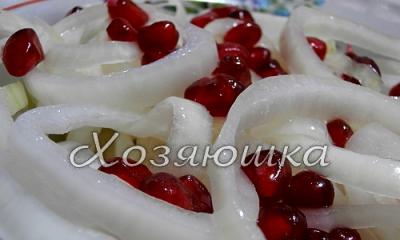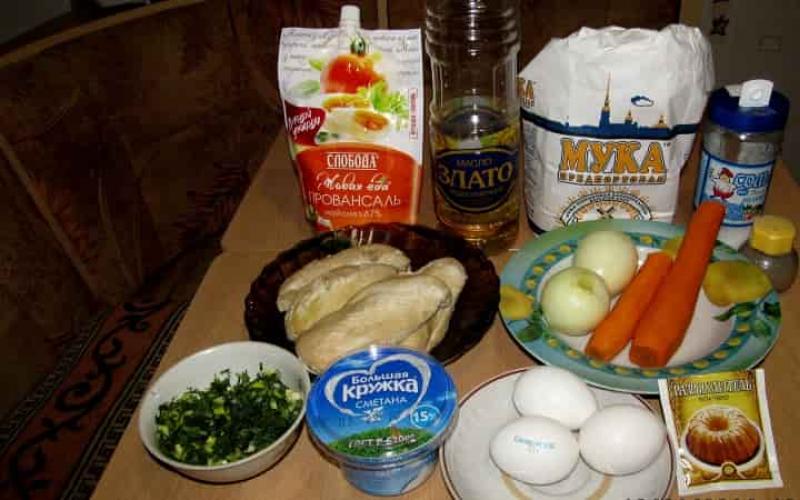Sterilization- this is the complete destruction of microorganisms, their vegetative forms from medical instruments and medical supplies.
Sterilization is subject to all items in contact with the wound surface, contaminated with blood or injection forms. medicines, as well as instruments that, when used, can damage the integrity of the mucous membranes.
Air sterilization method(in a dry oven) is recommended for dry products made of metal, glass and silicone rubber. Sterilization is carried out in packaging made of unimpregnated sack paper, wet-strength sack paper, paper for packaging products on brand E machines and kraft paper or without packaging (in open containers).
In accordance with OST 42-21-2-85, two sterilization modes are distinguished: 60 minutes at 180°C and 150 minutes at 160°C. When sterilizing in a dry-heat cabinet, several rules must be observed.
1. Products to be sterilized are loaded into the cabinet in an amount that allows free supply of hot air to the object to be sterilized.
2. Hot air must be evenly distributed in the sterilization chamber.
3. Large items should be placed on the upper metal grill so that they do not obstruct the flow of hot air.
4. The products to be sterilized must be laid horizontally, across the grooves of the cassettes, shelves, distributing them evenly.
5. It is unacceptable to load the sterilizer in bulk. It is not allowed to block the purge windows and the fan grille.
6. To control the temperature level, the nurse puts a bottle of sucrose in the closet: at a temperature of 180 ° C, in 60 minutes it should turn from a white crystalline powder into a dark brown mass. You can use a thermal indicator tape that changes its color.
After sterilization in an open container, medical instruments are not stored, but are used immediately. Disassembled syringes and two needles are placed in kraft bags made of parchment or wet-strength paper. The free end of the bag is tucked twice and sealed. The package indicates the capacity of the syringe and the date of sterilization. Sterility in kraft bags is maintained for 3 days.
Steam sterilization method. With the steam method (autoclaving), sterilization is carried out with humidified air (steam) at elevated pressure in special steam sterilizers (autoclaves). In accordance with OST 42-21-2-85, there are two modes of sterilization:
1) 2 atm - 132 ° C - 20 min - recommended for products made of corrosion-resistant metal, glass, textile materials;
2) 1.1 atm - 120°C - 45 min - recommended for rubber products (catheters, probes, gloves), latex and some polymeric materials (high density polyethylene, polyvinyl chloride).
Rubber gloves are sprinkled with talc before sterilization to prevent sticking. Gauze is laid between the gloves and each pair is wrapped separately. Sterilized materials are stored in kraft bags, two-layer calico packaging or sterilization boxes with a filter (biks) for no more than 3 days.
The material is placed in a bix during sterilization with steam under pressure and storage after sterilization of dressings, linen, syringes or rubber products (gloves, systems for transfusion of infusion solutions). Cutting instruments, devices with an optical system must not be sterilized with steam under pressure.
Bookmarking in Bix is carried out in a certain sequence.
1. Push back the bandage, open the side holes of the bix.
2. Wipe the surface of the bix from the inside and outside with a cloth moistened with 0.5% ammonia solution.
3. Line the bottom and walls of the bix with a diaper.
4. Required material laid loosely in a certain order: in a vertical position, in layers or sectors.
5. A vial with a small amount of benzoic acid or another indicator is placed in the middle of the bix to control sterility.
6. The corners of the diaper close the contents of the bix, put one more bottle with an indicator, several gauze napkins on top.
7. Tightly close the lid of the bix and tie an oilcloth tag to its handle, on which the number of the compartment, the number and name of the items in the bix are indicated.
8. After sterilization, the side holes of the bix are closed.
Upon receipt of the bix, pay attention to its belonging, date of sterilization and temperature. Sterile bixes are stored in cases. An unopened bix without a filter is sterile for 3 days. If the bix is opened to remove part of the material, then the material left is considered relatively sterile during the work shift. It should be remembered that in a bix with a sterile material, the side holes must be closed, and with a non-sterile material, they should be open.
The quality of autoclaving is checked with benzoic acid. A bottle with crystals of benzoic acid is placed in the autoclave, which melts at a temperature of 132 ° C and a pressure of 2 atm in 20 minutes. You can use a thermal indicator tape, which changes color in this mode.
Chemical sterilization method(use of chemical disinfectants and antiseptics). This method is used for products made of polymeric materials, rubber, glass, and metals. Sterilization is carried out in closed containers made of glass, plastic or enameled (the enamel must be undamaged) with the product completely immersed in the solution. After that, the product is washed with sterile water. The sterilized product is stored in a sterile container (sterilization box) lined with a sterile sheet for 3 days. For chemical sterilization in accordance with OST 42-21-2-85, the following modes are used:
1) 6% hydrogen peroxide solution:
at 18°C for 360 minutes;
50 °C for 180 min;
2) 1% solution of deoxon-1 at 18 °C for 45 minutes.
Follow the rules of chemical sterilization.
1. The temperature of the solutions during the sterilization process is not maintained.
2. Hydrogen peroxide solution can be used within 7 days from the date of preparation if stored in a closed container in a dark place. Further, the solution can only be used
subject to control of the content of active substances.
3. Deoxon-1 solution can be used within 1 day.
4. Sterilizing solutions are used once.
As a modification of the chemical method of sterilization, methods of processing medical devices with gases or vapors of chemical compounds are used.
In accordance with OST 42-21-2-85, three methods of chemical (gas) sterilization are provided.
A mixture of OB (ethylene oxide with methyl bromide in a ratio of 1.0: 2.5). The method is suitable for sterilization of products made of polymeric materials, rubber, glass, metal, pacemakers,
medical optics.
Sterilization is carried out in a gas sterilizer, MI microanaerostat. Products after pre-sterilization treatment are dried at room temperature or at a temperature of 35°C until visible moisture disappears, after which they are packed unassembled. They are sterilized in a package of two layers of polyethylene film 0.06 - 0.20 mm thick, parchment, non-impregnated bag paper, wet-strength bag paper, paper
for packaging products on brand E machines at 55 ° C for 240 - 360 minutes. The shelf life of products sterilized in polyethylene film packaging is 5 years,
in parchment or paper - 20 days.
Sterilization with a mixture of water vapor and formaldehyde. It is carried out in special stationary formalin sterilizers. The method is suitable for products made of rubber, polymeric materials, metal and glass. Sterilization is carried out in a package made of polyethylene with a thickness of 0.06 - 0.20 mm, parchment or kraft paper.
Formalin solution (for formaldehyde) is used as a sterilizing agent. Sterilization mode - 300 min at 75 °C.
To neutralize formaldehyde, a 23-25% aqueous ammonia solution is used. The shelf life of products sterilized in polyethylene film packaging is 5 years, parchment or kraft paper packaging - 21 days.
Formaldehyde from paraformaldehyde. Sterilization is carried out in Plexiglas chambers (the ratio of the floor area of the chamber to its volume is 1: 20), which have a perforated shelf with holes with a diameter of 0.6 - 0.7 cm (one hole per 1 cm 2). A layer of paraformaldehyde 1 cm thick is evenly distributed over the bottom of the chamber. The shelf is set at a level of 2 cm from the surface. The method is recommended for all-metal stainless steel cutting tools.
Sterilization is carried out without packaging, placing products on a perforated shelf in no more than two layers in mutually perpendicular directions.
Two sterilization modes are used: 300 minutes at 22 ° C or 360 minutes at 14 ° C. The shelf life of sterilized products in a sterile container (sterilization box) lined with a sterile sheet is 3 days.
Radiation, beam method of sterilization(use of ionizing radiation). For the sterilization of solid objects that deteriorate when heated (some plastics, electronic equipment, etc.), the so-called beam or radiation sterilization can be used (usually ionizing γ-radiation is used in doses of 3-10 million rads). This sterilization method is usually used in the factory for the industrial production of sterile medical products (for example, disposable syringes).
Sterilization control includes control of sterilizers operation, checking the values of sterilization mode parameters and evaluating its effectiveness.
The operation of sterilizers is controlled in accordance with the current documents by the following methods: physical (using instrumentation), chemical (using chemical indicators) and bacteriological (using biological indicators). Sterilization mode parameters are controlled by physical and chemical methods.
Sterilization efficiency is evaluated based on the results bacteriological research in the control of sterility of medical devices.
Sterility control is carried out by direct inoculation of products (immersion) in nutrient media or by flushing with sterile tweezers and a sterile gauze pad moistened drinking water wipe the product, place each napkin in a separate test tube (vial) with a nutrient medium. The material is not sterile with the growth of microflora (staphylococci, Escherichia coli, salmonella, Pseudomonas aeruginosa).
Physical Methods
Physical methods of control are carried out using means of measuring temperature (thermometers, thermocouples), pressure (pressure gauges,
pressure gauges) and time (timers). Modern sterilizers are also equipped with recording devices that record individual parameters of each sterilization cycle.
Chemical Methods
Indicators are designed to monitor critical parameters of the sterilization process. The critical parameters are: for the steam sterilization method - temperature, time of exposure to a given temperature, saturated water steam; for the air sterilization method - the temperature and time of exposure to this temperature; for gas sterilization methods - the concentration of the gas used, temperature, exposure time, relative humidity level; for radiation sterilization, the total absorbed dose.
In 1995, the International Organization for Standardization (ISO) published Sterilization of Medical Devices - Chemical Indicators - Part 1.
Since January 2002, GOST R ISO 11140-1 “Sterilization of medical products. Chemical indicators. General requirements". According to this document, chemical indicators are divided into six classes.
Indicators and integrators
Sterilization - complete destruction of vegetative forms of microorganisms and their spores in various materials.
Main methods:
1. Physical
exposure to high temperature
calcination in the flame of an alcohol lamp or gas burner– sterilize bacteriological loops, dissecting needles, tweezers; mode - flame.
boiling boiler - at least 30 minutes; sterilize small surgical instruments, slides and coverslips. Mode- 100
dry heat in a dry oven- the air is heated up to 165 - 170˚С within 2 hours; sterilize glassware
flowing steam in an autoclave– temperature 100 ˚С, -30 minutes 3 times.
steam under pressure in an autoclave- pressure 0.5 - 2 atm, time 15 - 30 min
tyndalization in a water bath - fractional sterilization at 56-58 ˚С for 1 hour 5-6 days in a row; for sterilization of substances easily destroyed at high t˚ (blood serum, vitamins, etc.)
pasteurization in special sterilizers– heating at t˚ 60 for 1 hour followed by rapid cooling; does not destroy disputes;
exposure to ionizing radiation
pasteurize drinks and products by ultraviolet irradiation - used UV radiation with a wavelength of 260 - 300 microns; use bactericidal lamps of different power (BUV-15, BUV-30) for air sterilization in boxes, operating rooms, children's institutions
2. Mechanical sterilization (filtering) – through asbestos and membrane filters with different pore diameters; sterilization of liquid materials that cannot withstand heat (blood serum, antibiotics, components culture media for bacteria and cell cultures)
3. Chemical - 70% ethyl alcohol, 5% iodine alcohol solution, 2% chloramine solution, 0.1% potassium permanganate solution, hydrogen peroxide, ethylene oxide, etc.
Methods for monitoring the effectiveness of sterilization
Biological indicators are used - known microorganisms that are most resistant to this method processing:
Bacillus stearothermophilus spores to control autoclaving efficiency
Bacillus subtilis - to control dry heat sterilization
Physical and chemical indicators are substances that undergo visible changes (change color, state of aggregation, etc.) only if the correct processing mode is observed.
Microbiological control of objects subjected to sterilization is not carried out in everyday practice. It is replaced by indirect control - control of the operation of sterilizers.
To carry out microbiological control, sowing of pieces of material, swabs from sterilized objects is carried out on media that allow the detection of aerobic and anaerobic bacteria, fungi. Lack of growth after 14 days of incubation in a thermostat indicates the sterility of the subject
2. Intradermal toxic tests in the diagnosis of infectious diseases. Shik test.
Shika reaction - intradermal test with diphtheria toxin, used to establish anti-diphtheria immunity. For staging Sh.r. 0.2 ml of standard diphtheria toxin containing 1/40 DLM for a guinea pig is injected into the skin of the palmar surface of the forearm with a tuberculin syringe. The result is taken into account after 72 - 96 hours. In people who do not have antibodies against the toxin or have few of them, redness and infiltration form at the injection site (positive reaction); in people who have antitoxic antibodies at a concentration of 1/30 AU or more, the infiltrate does not develop or it is less than 1 cm (negative reaction). Results Sh.r. used to assess herd immunity and preventive vaccinations. Currently, for this purpose, RPHA with erythrocyte diagnosticum is used.
Intradermal tests are mainly used for diagnostic purposes, but their intensity is used to judge the type of immunological reactivity. Along with this, the time of maximum development of the inflammatory process at the site of injection of the allergen into the skin serves as a differential sign of increased sensitivity of the immediate (24 hours) and delayed types (72 hours).
Ticket number 33
| " |
Biological indicators are used - known microorganisms that are most resistant to this method of processing:
Bacillus stearothermophilus spores to control autoclaving efficiency
Bacillus subtilis - to control dry heat sterilization
Physico-chemical indicators are substances that undergo visible changes (change color, state of aggregation, etc.) only if the correct processing mode is observed.
Microbiological control of objects subjected to sterilization is not carried out in everyday practice. It is replaced by indirect control - control of the operation of sterilizers.
To carry out microbiological control, sowing of pieces of material, swabs from sterilized objects is carried out on media that allow the detection of aerobic and anaerobic bacteria, fungi. Lack of growth after 14 days of incubation in a thermostat indicates the sterility of the subject
24. Definition of the concepts of "disinfection", "antiseptic". Basic methods of disinfection. Microbiological control of disinfection efficiency.
Disinfection- disinfection of environmental objects: the destruction of microorganisms pathogenic for humans and animals with the help of chemicals with antimicrobial properties. Unlike sterilization, disinfection leads to the death of most, but not all forms of microbes and provides only a reduction in microbial contamination (contamination), and not complete disinfection of the object.
Antiseptics- a complex of therapeutic and preventive measures aimed at the destruction of microorganisms that can cause an infectious process on damaged or intact areas of the skin or mucous membranes, by treating them with microbicidal substances - antiseptics.
Physical and chemical methods are used for disinfection.
I. Physical methods.
Exposure to high temperatures.
Boiling. Syringes, small surgical instruments, glass slides and coverslips, and some other items are placed in sterilizers into which water is poured. To eliminate hardness and increase the boiling point, 1-2% sodium bicarbonate solution is added to water. Boiling is carried out for at least 30 minutes. When boiled, some viruses (for example, hepatitis B virus) and bacterial spores remain viable.
Pasteurization is based on the antibacterial effect of temperature on vegetative cells, but not on bacterial spores. The material is heated at a temperature of 50-65 "C for 5-10 minutes, followed by rapid cooling. Usually pasteurized drinks and food products(wine, beer, juices, milk, etc.).
Exposure to ionizing radiation.
Ultraviolet radiation (UV) with a wavelength of 260-300 microns has a fairly pronounced microbicidal effect, however, some types of microbes and spores are resistant to UV. Therefore, UV irradiation is not able to ensure the complete destruction of microflora - the sterilization of the object. UV treatment is usually used for partial disinfection (disinfection) of large objects: surfaces of objects, rooms, air in medical institutions, microbiological laboratories, etc.
Gamma radiation has a pronounced microbicidal effect on most microorganisms, including vegetative forms of bacteria and spores of most species, fungi, and viruses. Used for sterilization of plastic dishes and disposable medical instruments. It should be borne in mind that treatment with gamma radiation does not ensure the destruction of infectious agents such as prions.
II. Chemical methods. This is the treatment of an object with disinfectants - microbicidal chemicals. Some of these compounds can have a toxic effect on the human body, so they are used exclusively for the treatment of external objects. Commonly used disinfectants are:
§ hydrogen peroxide,
§ formaldehyde,
§ phenols (3-5% solution of phenol, lysol or carbolic acid),
§ iodophors.
The choice of disinfectant and its concentration depend on the material to be disinfected. Disinfection may be sufficient to decontaminate only medical instruments that do not penetrate the body's natural barriers (laryngoscopes, cystoscopes, ventilators). Some substances (boric acid, merthiolate, glycerin) are used as preservatives for the preparation of therapeutic and diagnostic sera, vaccines and other preparations.
25. Definition of the concept of "chemotherapy". The main groups of chemotherapeutic substances. Mechanisms of antimicrobial action. chemotherapeutic index.
Chemotherapy- treatment of infectious and neoplastic diseases with chemical preparations that are not products of the reaction of the organism and the pathogen.
The following drugs are used:
Acridine preparations (rivanol, tripaflavin, acricid, flavicide, etc.) - in case of pyogenic diseases, it will inflame. processes of the pharynx and nasopharynx
Sulfanilamides (streptocide, etazol, albucid, sulfadimethoxine, etc.) - for pyogenic diseases, tonsillitis, scarlet fever, erysipelas, pneumonia, dysentery, gonorrhea, anaerobic infections, etc .; the mechanism of action is that they are structural analogues of para-aminobenzoic acid, i.e. are microbial antimetabolites
Diaminopyrimidines (trimethoprim, pyrimethamine, tetroxoprim) are also antimetabolites, replacing pyrimidine bases; wider range of action
Nitrofurans (furazolidone, furacillin, furadonin, furaginide) - for intestinal infections; block the enzyme systems of microbial cells
Quinolones (negrams, nitroxoline, ciprolet, etc.) - disrupt various stages of microbial cell DNA synthesis
Azoles (candide, nizoral, fluconazole, etc.) - antifungal; mechanisms of action - inhibition of the biosynthesis of sterols of the cell wall, inhibition of decomp. intracellular processes leading to the accumulation of hydrogen peroxide and damage to cell organelles, inhibition of the transformation of blastospores into invasive mycelium (genus Candida)
Antiviral (interferon and interferonogens, deoxyribonuclease and ribonuclease, benzamidazole and guanidine, rimantadine, acyclovir, etc.)
Antiblastoma (azotiprites, antimetabolites, diepoxides, etc.)
Antibiotics
Chemotherapeutic index (CI) equals the quotient of dividing the therapeutic dose of the drug that destroys the pathogen by the maximum tolerated dose: CI = min therapeutic dose / max tolerated dose. If the index is less than 1, the drug can be practically used; if more, then the introduction of the drug into the body is accompanied by toxic effects. Such a drug should not be used to treat relevant infections.
Antimicrobial (antibacterial) action of antibiotics measured in units of action (ED) contained in 1 ml of the drug solution or in 1 mg of a chemically pure substance. The unit of activity is the minimum amount of antibiotic that retards the growth of a standard strain of a certain type of microorganism under strictly defined conditions. 1 mg of most antibiotics contains 1000 IU (but, for example, 1 mg of benzylpenicillin contains 1670 IU, nystatin - at least 4000 IU).
The mechanism of action of antibiotics- these are changes in the structure and metabolism and energy of microorganisms, which lead to the death of microorganisms, the suspension of their growth and reproduction:
1. Violation of the synthesis of the bacterial cell wall (penicillin, cephalosporins)
2. Inhibit protein synthesis in the cell (streptomycin, tetracycline, chloramphenicol)
3. Inhibit synthesis nucleic acids in a microbial cell (rifampicillin)
4. Inhibit enzyme systems (gramicidin)
Sterilization is the removal or destruction of all living microorganisms (vegetative and spore forms) inside or on the surface of objects.
Sterilization is carried out by various methods: physical, chemical, mechanical.
The main requirements for the sterilization process are reflected in the industry standard 42-21-2-82 “Sterilization and disinfection of medical devices. Methods, means, regimes”.
The quality of these products is controlled by an independent British testing center. The indicator strip is inserted into the chamber of the test case. These tests can simulate sterilization conditions for cavity instruments, endoscopes, etc. the strip is provided with a self-adhesive layer on reverse side. Test packs can be used to test steam performance and quality. The test strip is inserted into the chamber with one end of the capillary of the specified length. The other end of the capillary forms the vapor inlet to the system.
Physical methods. The most common method of sterilization is exposure to high temperatures. At a temperature approaching 100 0 C, most pathogenic bacteria and viruses die. Spores of soil thermophilic bacteria die when boiled for 8.5 hours. Microorganisms that have fallen into the deep layers of the earth, or covered with clotted blood, are protected from high temperatures and retain their viability.
The indicator tape is provided with a self-adhesive layer on the reverse side. The following data will be printed on the plier labels: sterilization date, expiration date, sterilization number and sterilization number and sterilization employee number. To control the sterilization of long hollow objects, the Brown Stress Test is particularly well suited. A test dye consisting of proteins, lipids and polysaccharides is deposited on a plastic carrier. The design of the test also imitates the washing of hard-to-reach instruments.
Relevant sections of this section. Receipt and dispatch of materials in the form of a delivery service in accordance with the schedule for constitutional transport in accordance with the requests of individual departments. Machine wash in an automatic washing machine with adjustable and controlled parameters. Completion of instrumentation tools into kits - performed by eminent nurses. Packaging of medical devices in special disposable bags for sterilization. Warehouse storage and disposal of the disposable cap, incl. surgical gowns for hospital departments. Damp heat intended for sterilization of metal, porous, hollow and other thermostable medical devices; plasma for sterilization of thermolabile medical devices; formaldehyde, which is intended for sterilization of thermolabile medical devices.
- Receipt and delivery of requirements for statistics - individually.
- Disinfection, mechanical cleaning and special treatment of medical devices.
- Manual pre-cleaning of tools and utensils.
When sterilizing by physical methods, the action of high temperatures, pressure, ultraviolet radiation, etc. is used.
Carried out by the operator servicing the sterilization equipment.
Allows you to quickly identify and eliminate deviations in the operation of sterilization equipment.
Flaw. Evaluates the effect of parameters inside the chamber of the device, and not inside the packages to be sterilized, and therefore should be used in conjunction with other control methods.
3.2.2. Chemical method.
Required for operational control of one or more operating parameters of the sterilization cycle.
Must be performed daily during each sterilization cycle.
It is carried out using chemical indicators (see Classification of chemical indicators).
The principle of operation of chemical indicators is based on a change in the state of aggregation of the indicator substance or (and) the color of the indicator paint under the action of certain sterilization parameters that are strictly specific for each type of indicators, depending on the method and mode of sterilization.
Classification of chemical indicators
A. According to the principle of placing indicators on sterilized objects, two types of chemical indicators are distinguished: external and internal:
External indicators (tapes, stickers) are attached with a sticky layer on the surface of the packages used (paper, metal, glass, etc.) and removed afterwards. An external indicator can also be some packaging materials (for example, paper-plastic bags, rolls) containing a chemical indicator on their surface.
Internal indicators are placed inside the package with sterilized materials, regardless of its type (paper or plastic bag, metal container, etc.). These include various types of paper indicator strips containing indicator paint on their surface.
B. Depending on the number of controlled parameters of the sterilization cycle, several classes of chemical indicators are distinguished.
The higher the class of the indicator, the more parameters of the sterilization cycle it controls and the higher the probability of obtaining sterile materials when using it.
Class 1. Indicators of the sterilization process
External indicators intended for use on individual packages of sterilized materials. The results of the decoding make it possible to conclude that this package with the instrument (material) has undergone sterilization treatment by the selected method and thus distinguish it from the untreated one.
Class 2. Indicators of one variable
Designed for operational control of the action of one of the active sterilization factors (for example, reaching a certain temperature, the concentration of the active substance in the chemical solution, gas concentration, etc.).
Class 3. Multiparameter indicators
Designed to evaluate the effect of two or more factors of the sterilization cycle.
The indicator paint applied to their surface changes its color only under the simultaneous action of several parameters (for example, temperature and exposure during air sterilization; temperature, exposure and saturated steam during the steam sterilization method, gas concentration and relative humidity during the gas method, etc.) .
Class 4. Integrators
Chemical indicators, which are analogous to biological ones.
Designed for use in any mode of steam or gas sterilization methods.
Control the simultaneous action of all parameters of the selected sterilization method.
The principle of operation of integrators is based on the fact that the rate of melting of the chemical contained in it is identical to the rate of death of spore forms of bacteria, which are test and used in traditional biological indicators.
Advantage. The interpretation of the results is carried out immediately after the end of the sterilization cycle and allows you to make a conclusion about the sterility (non-sterility) of the materials.
3.2.2.1. All types of chemical indicators should be used in accordance with the Instructions for Use approved by the Ministry of Health of the Republic of Belarus.
3.2.2.2. Placement of chemical indicators on sterilized objects for quality control of the sterilization process is presented in Table 2.
table 2
Placement of chemical indicators on objects to be sterilized depending on the method of sterilization
┌────────────────────────────────────────────────┬─ ─────────────────┐ │ Sterilization method │ External indicator │ Internal │ │ │ │ indicator │ ├────────────────── ──────┼────────────────────────────────────────────┤ │ Steam (all modes) │ One label or │ One indicator │ │ │ piece of indicator │ strip inside │ │ │ tape 6 - 7 cm long │ of each package. │ │ │per package or │When using │ │ │use of │metal │ │ │packaging material │containers - in │ │ │with applied │center or at the bottom │ │ │indicator │each │ ├─── ───┬────────────┼───────────────────────────────── ─────────┤ │Air │Open │Not used when │1 indicator │ │ │ │sterilization │strip in the center │ │ │ │metal │each container│ │ │ │instruments in open│ │ │ │ containers ──────────┤ │ │Closed │One label or │One indicator │ │ │ │piece of indicator │strip inside │ │ │ │tape for each │each package │ │ │ │package │ │ │ ────────┼─────────────────────────────────────┼───── ──────────────┤ │Gas │Ethylene- │One label or │One indicator │ │ │oxide │piece of indicator │strip inside │ │ │ │tape for each │each package │ │ │ │packaging or │ │ │ │ │use of │ │ │ │ │packaging │ │ │ │ │material with applied │ │ │ │ │indicator │ │ │ ├────────────┼────────────────────────────────── ─────────┤ │ │Paroformals-│Usage │One indicator │ │ │new │packaging material │strip inside │ │ │ │with applied │of each package │ │─ │ │───── │ │ └ │ ──────┴─────────────┴───────────────────────┴────── ─────────────┘
┌────────────────────────────────────────────────── ─────────────────┐ │ Sterilization method │ Frequency of use │ ├─────────────────────────────── ───────────────────────────────────────────┤ │Steam (all modes) │ Weekly. │ │ │ Mandatory after installation and adjustment of │ │ │ equipment, carrying out any amount of │ │ │ repair work, during sterilization of │ │ │ implantable materials, upon receipt of │ │ │ unsatisfactory results │ │ │ chemical monitoring │ ├───── ────────────────┼───────────────────────────────── ──────────┤ │Air (all modes)│Weekly. │ │ │Required after installation and adjustment of │ │ │equipment, carrying out any amount of │ │ │repair work, during sterilization of │ │ │implantable materials, upon receipt of │ │ │unsatisfactory results │ │ │chemical monitoring │ ├───── ─┬──────────────┼───────────────────────────────── ──────────┤ │Gas│Ethylene- │During each sterilization cycle, │ │ │oxide │and also after installation and │ │ │ │adjustment of equipment, carrying out any │ │ │ │volume of repair work │ ├───────┼────────────────────────────────────────── ──────────────────┤ │ │Paroformal- │When carrying out each sterilization cycle, │ │ │new │and also after installation and │ │ │ │adjustment of equipment, carrying out any │ │ │ │ volume of repair work │ └───────┴──────────────┴──────────────────── ──────────────────────────┘
Note. Implantable materials should not be used until the results of the interpretation of biological indicators.
4. STAGES OF STERILIZATION QUALITY CONTROL
4.1. The whole process of sterilization quality control should be carried out by trained medical personnel using the above methods in several stages (see table 4).
Table 4
Sterilization quality control steps
┌─────────────┬───────────────────────────────────── ┬────────────────┐ │Control stage│ Purpose │Used │ Who conducts │ │ │ │ methods │ │ │ │ │ control │ │ ├───────── ─────┼─────────────────────────────────────────────── ────────┤ │1. Control │Assess the quality │Physical │Personnel, │ │work │work │ │serving │ │equipment │ │ │sterilization │ │ │ │ │equipment ─────────────────┼────────────────────────────────┤ │ 2. Control │ Ensinity the quality of │ chemical, │ personnel, │ │packaging (see section │ │ │ │ │5 p. 5.2) 3. Control │Assess the achievement of │Chemical, │Personnel │ │quality │parameters │biological│of departments during ││sterilization │sterilization inside ││use ││packages with │each of the packages. │ │sterile │ │materials │Carried out at the time of │ │materials │ │ │opening the package │ │ │ │ │directly │ │ │ │ │before use │─ │ │─ │──────────────── ─────────────────────┼────────────────────────────── ─┤ │4. Protocols-│Written │Physical │The above │ │development │confirm the quality │ │categories │ │obtained │sterilization │ │personnel │ │results │process │ ────────── ───────────────────────────────────────────────────── ┘
5.2.1.2. The test package must correspond to the contents to be sterilized in terms of density, size and quality.
5.2.1.3. The location of the test package should be the most inaccessible for sterilizing factors. The principle of placement is presented in table 5.
5.2.1.4. The sterilization date is marked before the start of sterilization.
5.2.1.5. After the end of the sterilization cycle, the test package is opened.
5.2.1.6. The operator draws up a protocol for the sterilization of a given batch of material in a special accounting form (journal or file cabinet) - see Appendix 1. If the sterilizer contains a printer device that records the parameters of the sterilization cycle, then the resulting diagrams after the end of each cycle are pasted into a log or placed in an envelope.
5.3. Based on the results of deciphering the indicators placed inside the test package, the operator makes a conclusion about the quality of processing of the entire batch of sterilized objects and the possibility (impossibility) of further use of materials.
5.4. The quality of processing of each specific package with materials is carried out in departments that use sterile materials of this batch.
5.5. The correctness of recording the results is controlled by responsible personnel (head nurse of the CSO, head nurse of the department).
Table 5
Placement of the test package depending on the sterilization method
┌─────────────────────────────────────────────────── ─────────────────┐ │ Method │ Test package location │ │ sterilization │ │ ├──────────────────── ┼───────────────────────────────────────────────┤ │Near the drain or near the front door │ │ │camera of the machine ───────────────────────────────┤ │Air │In the center of the camera │ ├──────────── ────────┼──────────────────────────────────────── ─────┤ │Gas │In the center of the chamber │ └─────────────────────────────────────── ────────────────────────────────┘
6. PACKAGING MATERIALS
6.1. The packaging materials used for any sterilization method must have the following characteristics:
Do not affect the quality of sterilized objects.
Be permeable to sterilizing agents.
Ensure tightness until the package is opened.
It is easy to open without violating the asepsis of the contents.
6.2. There are the following types of packaging material, which can be used alone or in combination with each other: paper, metal, glass, fabric, plastic.
6.3. Packaging materials are divided into two categories: disposable (paper, paper and plastic materials), reusable (containers).
6.4. To ensure long-term maintenance of sterility, regardless of the sterilization method, it is recommended to use 2 layers of packaging material (paper, gauze, cloth, etc.). Paper for packaging is available in two types - plain and crepe. The latter has increased strength, resistant to damage, better retains its shape. Packaging material can be produced in the form of separate sheets of various sizes, in the form of bags or rolls of various capacities.
6.5. Any type of packaging material must comply with the sterilization method used and the requirements of national standards.
6.7. When loading the steam sterilizer chamber with various types of packages (metal containers, paper bags), metal containers should always be placed under textile or paper packages to allow condensate to sinter freely and prevent them from getting wet.
6.8. Annexes 2 and 3 provide standard packing schemes for materials prior to sterilization.
Table 6
Maximum shelf life of sterilized products depending on the type of packaging
┌───────────────────────────────────────────────── ──┬──────────────┐ │ Type of packaging │Shelf life│ ├───────────────────────── Paper, cloth, etc. materials containing cellulose│ 3 days ──────────┼───────────────┤ │Paper, fabric based on synthetic fibers │ 2 months │ │(2 layers) │ │ ├───── ───────────────────────────────────────────────┼── ─────────────┤ │Combined paper-plastic materials │ │ │ tm tm │ │ │(type 3M Steri-Dual): │ │ ├───────────── ──────────────────────────────────────────────────── ────┤ │ with thermal sealing on machines │ 6 months │ ├─────────────────────────────────────────────────────────────────── ───────────────┼───────────────┤ │ when sealed with indicator packaging tape │ 3 months │ ├──────── ────────────────────────────────────────────┼────── ─────────┤ │Synthetic materials in the form of bags or rolls │ 1 - 5 years │ │ tm tm │ │ │ (type 3M Steri-Lok, Tanvek) with thermal sealing on devices ─────┼────────────────┤ │Metal containers without filters │ 3 days │ ├──────────────────── Metallic containers with filters │ 21 days └───────────────────────────────────────── ─────────┴───────────────┘
STERILIZATION PARAMETERS REGISTER FORM
┌────────┬───────┬───────┬──────────────────────────── ─┬───────────┬────────────────────────────────── ──┐ │Date │N ste-│N for- │Time │Time │Description │Parameters │External │Internal- │Biolo- │Personal │ │ │or- │load│start│windows- │sterilizable│cycle (t │ chemical- │early │logical │signature│ │ │congestion│ │steri-│chaniy │materials │deg C │ │ │ │ │ │ │ │ │ liza- │ │ etc.) │ │ indicator - ┼─────────┼─────────┼────────────┼─────────┤ │12.07.99│2 │3 │ 8.50 │9.35 │ are listed │ Lesson │ place After │ │ │ │ │ │ │ │ │ │ │ │ │ │ │ │N set ┴─────────────┴────────────┴────────────────────── ───────┴───────┘ Inside is a chemical indicator (integrator) from a test package │ \/ ┌──────────────────── Date N sterilizer load N │ │ ┌──────────────────────────┐ │ │ Cycle start: ___ h ___ min │ Place to stick │ │ │ │ external indicator │ │ │ End of cycle: ___ h ____ min └────────────────────────────────┘ │ │ │ │ Sensor readings: │ │ __________________________ │ │ │ │ Description of sterilized materials │ │ __________________________ │ │ │ │ Chemical indicator Neg. / Positive │ │ │ │ Biological indicator Neg. / Positive │ │ │ │ Signature ________________ │ │ │ └──────────────────────────────────────── ─────────────────────────┘
Annex 2 (mandatory)
STANDARD SCHEME OF DOUBLE-LAYER PACKAGING OF MATERIALS BEFORE STERILIZATION
*****ON PAPER
Annex 3 (mandatory)
STANDARD PACKAGING SCHEME OF MATERIALS BEFORE STERILIZATION INTO WOVEN MATERIALS
*****ON PAPER







